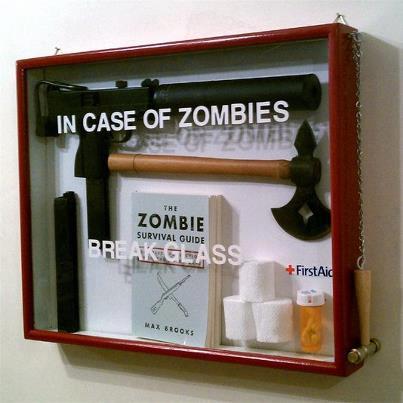What technique does the military use to make sure plans work on the battlefield?
.
It’s a concept called “Commander’s Intent”: CI is a crisp, plain-talk statement that appears at the top of every order, specifying the plan’s goal, the desired end-state of an operation.
If the unpredictable occurs rendering plans ineffective, the CI still allows everyone to stay focused on the end goal.
Via Made to Stick: Why Some Ideas Survive and Others Die:
“The trite expression we always use is No plan survives contact with the enemy,” says Colonel Tom Kolditz, the head of the behavioral sciences division at West Point. “You may start off trying to fight your plan, but the enemy gets a vote. Unpredictable things happen—the weather changes, a key asset is destroyed, the enemy responds in a way you don’t expect. Many armies fail because they put all their emphasis into creating a plan that becomes useless ten minutes into the battle.”
And:
Colonel Kolditz says, “Over time we’ve come to understand more and more about what makes people successful in complex operations.” He believes that plans are useful, in the sense that they are proof that planning has taken place. The planning process forces people to think through the right issues. But as for the plans themselves, Kolditz says, “They just don’t work on the battlefield.” So, in the 1980s the Army adapted its planning process, inventing a concept called Commander’s Intent (CI).
CI is a crisp, plain-talk statement that appears at the top of every order, specifying the plan’s goal, the desired end-state of an operation. At high levels of the Army, the CI may be relatively abstract: “Break the will of the enemy in the Southeast region.” At the tactical level, for colonels and captains, it is much more concrete: “My intent is to have Third Battalion on Hill 4305, to have the hill cleared of enemy, with only ineffective remnants remaining, so we can protect the flank of Third Brigade as they pass through the lines.”
The CI never specifies so much detail that it risks being rendered obsolete by unpredictable events. “You can lose the ability to execute the original plan, but you never lose the responsibility of executing the intent,” says Kolditz… Commander’s Intent manages to align the behavior of soldiers at all levels without requiring play-by-play instructions from their leaders. When people know the desired destination, they’re free to improvise, as needed, in arriving there.
How do they develop a CI?
The Combat Maneuver Training Center, the unit in charge of military simulations, recommends that officers arrive at the Commander’s Intent by asking themselves two questions:
If we do nothing else during tomorrow’s mission, we must _________________.
The single, most important thing that we must do tomorrow is ________________.
Join 25K+ readers. Get a free weekly update via email here.
Related posts:
10 ways to turn yourself into a productivity dynamo




